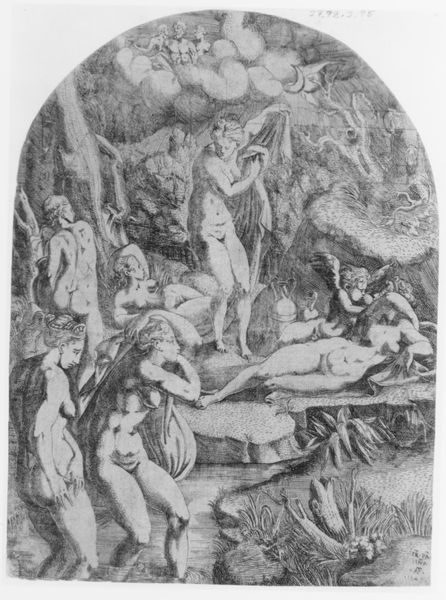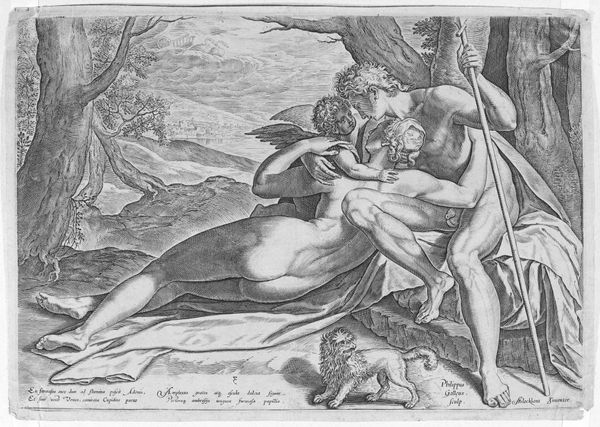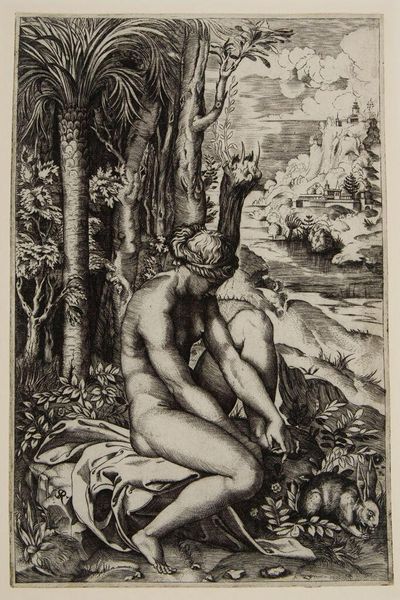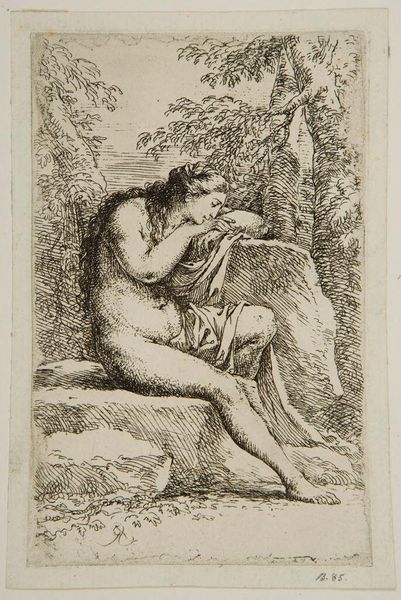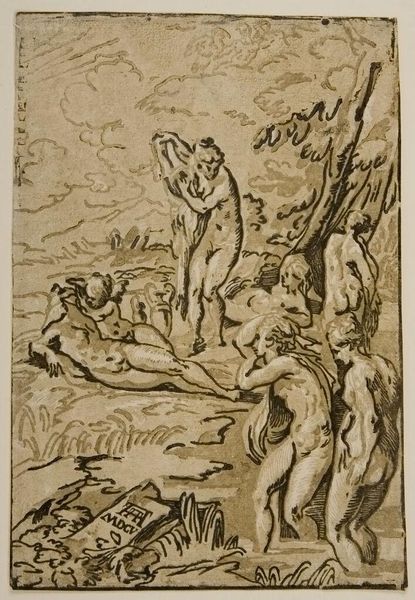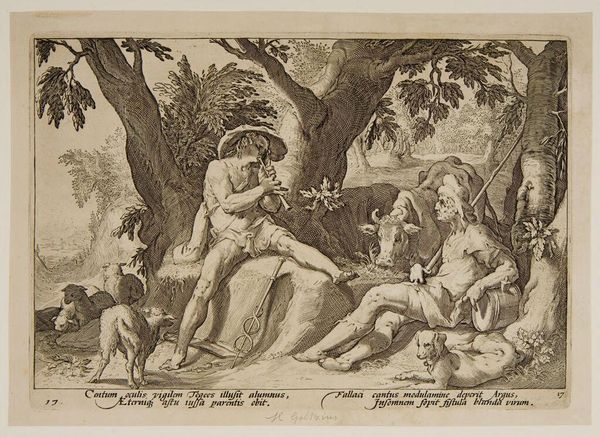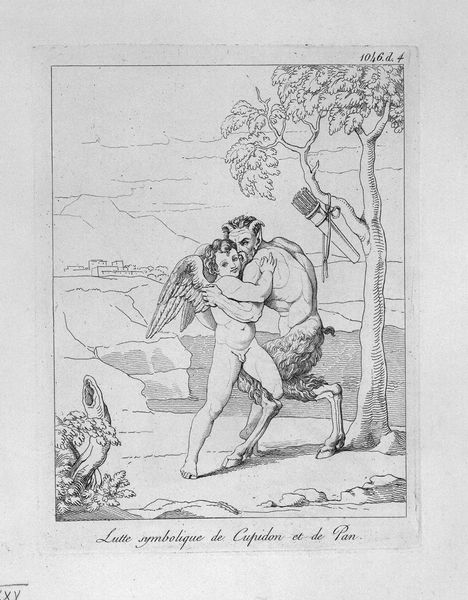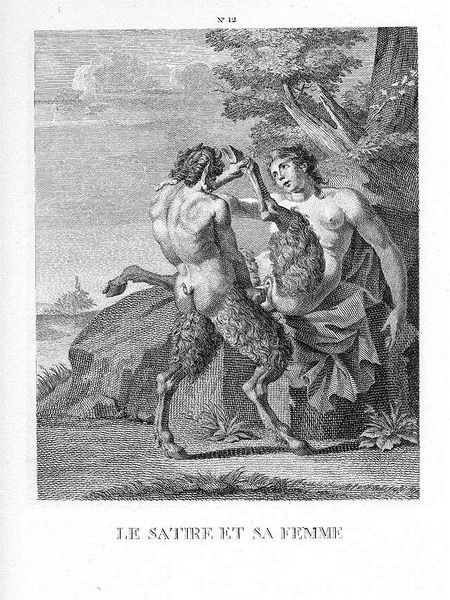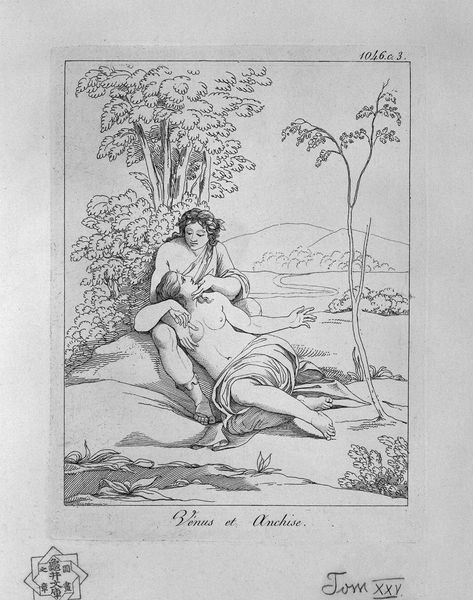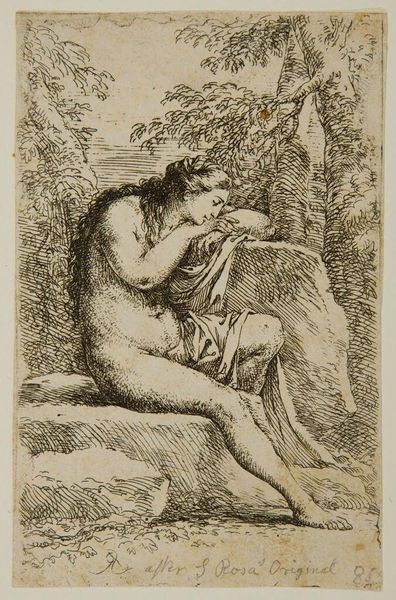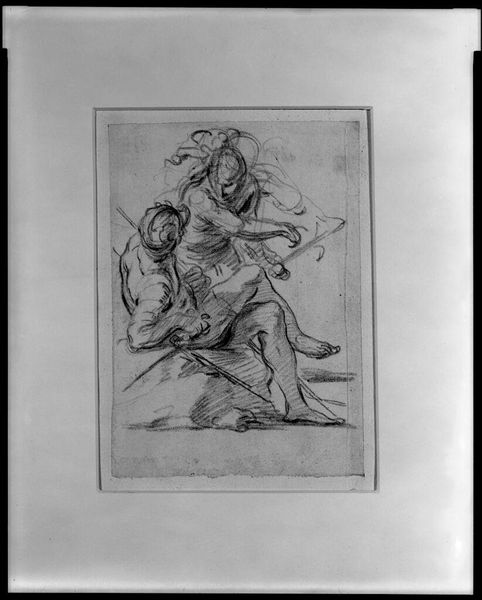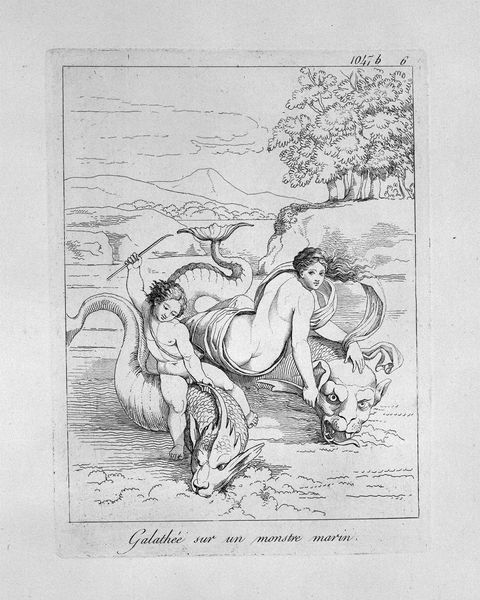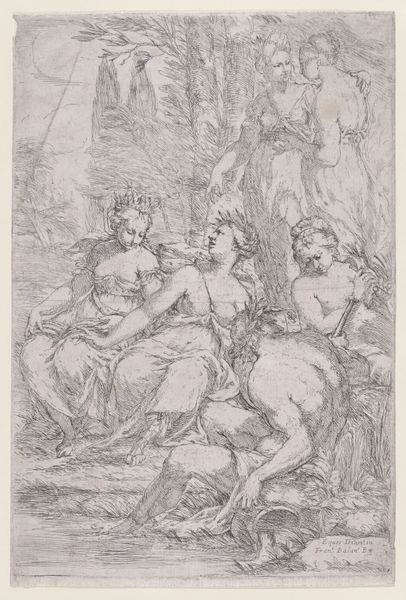
print, engraving
#
neoclacissism
# print
#
landscape
#
romanesque
#
roman-mythology
#
mythology
#
nude
#
engraving
Copyright: Public domain
Giovanni Battista Piranesi made this etching, "Pan and Syrinx", sometime in the mid-18th century. It presents a mythological scene: the lustful god Pan, half-man and half-goat, pursues the nymph Syrinx. To escape him, Syrinx begs to be transformed into reeds, which Pan then fashions into his signature instrument, the panpipes. Piranesi, working in Rome, was fascinated by the city's ancient ruins and the grandeur of its past. Here, the crumbling architecture in the background is a testament to the passage of time and the transience of earthly power. The story of Pan and Syrinx, rooted in ancient Greek mythology, was ripe for the picking in 18th century Europe, particularly in the art academies. Artists were expected to draw from classical texts to prove their intellect, and the art institutions were designed to help them do so. Historians consult a range of sources to interpret works like this, from ancient texts to 18th-century travel journals. The meaning of art is not fixed but is shaped by the social and institutional context in which it is made and viewed.
Comments
No comments
Be the first to comment and join the conversation on the ultimate creative platform.
